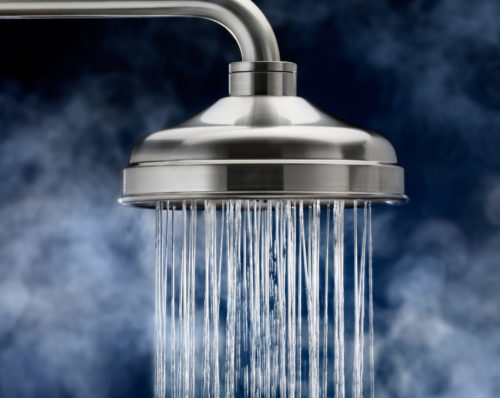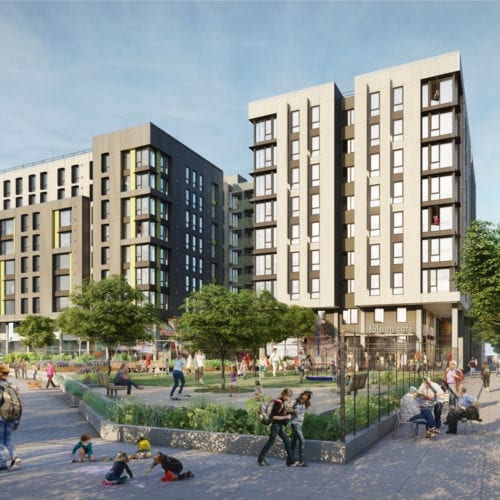shower head with steam

The Future of Hot Water Is Heat Pumps
State and local leaders nationwide are beginning to recognize the importance of eliminating fossil fuels in newly constructed buildings. The rationale is clear: gas has an extremely limited place in our clean energy future, and it’s far more difficult, costly, and disruptive to swap out gas-consuming equipment from an existing building than it is to build without gas from the start.
However, this long-term view does little to sway the developers, contractors, and housing regulators accustomed to basing their decisions on one question: what does it cost? Advocates have long worked to provide a sufficient answer to this often-complex problem.
The challenge is particularly significant for heat pump water heaters (HPWHs). These systems have been sold in the United States for over 40 years but have historically struggled to penetrate the market, leaving the industry with relatively few case studies, best practices, and expert practitioners to learn from.
But as technology continues to improve, gas rates increase, and renewable grid penetration bolsters the carbon benefit of electrification, HPWHs appear poised to take a massive leap in market growth. Over 30 municipalities in California and Massachusetts have already passed policies prohibiting or strongly disincentivizing gas water heaters in new buildings. In some cases, the only roadblock is the detailed cost data that developers and contractors need to come along for the ride.
RMI is seeking to address this knowledge gap with Heat Pumps for Hot Water: Installed Costs in New Homes, an insight brief based on a comprehensive cost dataset for HPWH projects in both single-family and multifamily homes. The key takeaway: HPWHs are often cheaper to install than gas systems in new residential buildings, especially for projects with gas infrastructure connection challenges (e.g., urban infill projects) and those designing against a high-performance benchmark (including California’s Title 24 building code). Other projects can be brought to cost parity with the heat pump incentives increasingly made available by electric utilities and governing bodies promoting electrification measures to achieve their carbon goals, like the $1,500/unit rebate currently offered by BayREN.
The cost-benefit of these systems will only improve over time as design and installation best practices further reduce installed costs, technological progress and new grid services improve cost savings, and the grid gets cleaner.
What Policymakers Can Do
Utilities, municipal governments, and other regulating bodies can do more to ensure that developers replace the gas water heating systems that they have installed for decades with cost-competitive and carbon-superior HPWHs.
Municipalities in many states have the power to adopt all-electric building policies today. Municipalities and other authorities can also aggressively incentivize HPWHs for the same reasons they should aggressively incentivize heat pump HVAC options. Entities offering incentives can also use tracking programs to collect and publicize more cost data and supplement the work laid out in Heat Pumps for Hot Water: Installed Costs in New Homes, like the program Silicon Valley Clean Energy currently administers for single family retrofits.
Municipalities without the authority or funding to pursue these measures can nonetheless promote progress simply by adjusting building permit processes to incentivize, or at least require the consideration of, HPWH design options. Proven methods include expedited processes and height or density bonuses for eligible buildings. Municipalities could also promote heat pump options at nearly zero cost simply by requiring a comprehensive cost comparison between gas and HPWH options as part of project planning for any multifamily construction project. A cost comparison that requires developers to consider typically externalized gas infrastructure connection costs can quickly reveal cost savings opportunities that they might not otherwise identify.
Relevant authorities can also support the deployment of HPWHs and other all-electric products by providing training, education, and technical assistance services to developers and contractors. These services, many of which can be offered virtually even during a global pandemic, can help contractors generate new business and minimize cost overruns and waste in design and installation while increasing the uptake of available incentives. Perhaps most importantly, these new business opportunities can form the basis of a workforce development program targeted at nascent women- and minority-owned businesses as part of a broader just energy transition. The Contractor Academy led by Emerald Cities Collaborative follows a similar model.
Next Steps
Every new gas connection represents a missed opportunity to accelerate and simplify our clean energy transition. HPWH systems can serve as a keystone technology in this transition, giving us better-performing buildings, cleaner air, and an opportunity to create a bigger and more diverse workforce. RMI’s analysis shows that these benefits can come at little or no cost to project developers in new single-family and multifamily developments, which can serve as a proving ground that paves the way to making similar improvements in existing buildings.
Policymakers still must work to understand the cost-benefit of HPWH systems by marrying the installed costs detailed in RMI’s analysis with an operational cost-benefit analysis reflecting local gas and electric utility rates, grid emission projections, utility infrastructure needs, and climate. The results can determine just how aggressively to promote HPWHs over time and when to mandate their use in new construction.
The future of hot water is heat pumps. Read our insight brief and get your community up to speed today!

